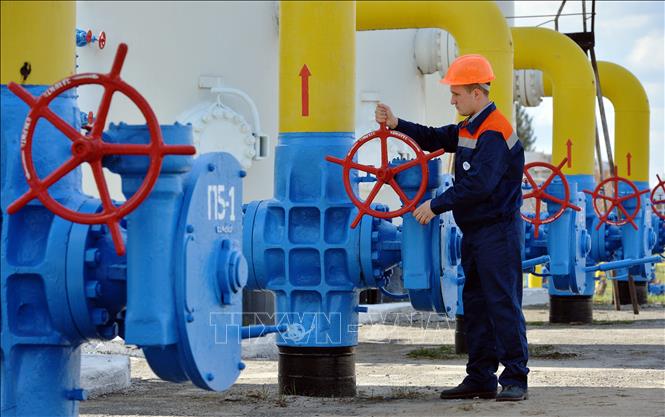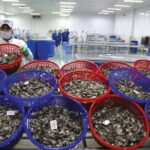
Gas workers operate valves at a gas pumping station in the town of Boyarka, Ukraine. Photo credits: AFP/TTXVN
However, the European Union may receive less gas from Russia after Ukraine signaled that it does not intend to extend the agreement when it expires on December 31, 2024. Nevertheless, EU energy commissioner Kadri Simson has pointed out that the bloc is also not “interested” in pushing for an extension of this agreement.
The EU is warning member countries to prepare for the worst-case scenario. Ukraine’s gas accounts for 5% of the EU’s total gas imports.
High-level analyst Aura Sabadus at market intelligence company ICIS, told Politico that Austria, Hungary, and Slovakia could be the hardest hit by import cuts. Such a scenario could lead to another gas price hike, following the record highs experienced after Russia launched a special military campaign in Ukraine.
The situation has been further exacerbated by Germany’s recent decision to unilaterally tax gas exports, making it more difficult for these countries to switch to imports from Russia through Germany, Italy, or Turkey.
Brussels has called on EU countries to phase out Russian fossil fuels by 2027. So far, the bloc has been trying to eliminate around 70% of its gas imports from Russia and increase imports from the US and Norway. The European Commission warned that losing Russia’s supply through Ukraine could lead to higher transportation costs, while storage taxes imposed between countries in the bloc could “make this diversification difficult and more expensive”.
Fortunately, Europe currently has historically high gas reserves. Commodity analysts at Standard Chartered predict that the EU’s gas reserves will be at record highs, setting the stage for a low-priced summer.
EU gas demand in the first 16 days of February 2024 was 12.4% lower than the same period last year and 18.4% lower than February 2022. However, StanChart has warned that some demand will not return no matter how much prices drop.
Meanwhile, weakening demand continues to put pressure on the US gas market, with gas prices at the Henry Hub distribution center down nearly 30% since the beginning of the year. However, the market started the new week with optimistic signals as natural gas “giant” EQT Corp. announced it would cut production in response to low prices.
On March 4, EQT announced it would cut natural gas production by about 1 billion cubic feet per day through the end of March 2024, after which they will reassess market conditions to determine the next steps.





































